MOHAI - Museum of History and Industry
A dive into the Museum of History and Industry (MOHAI). Tips, tricks, and what to expect.
MOHAIHISTORY MUSEUM
5/30/20245 min read
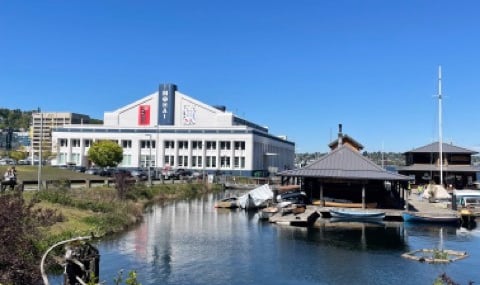

Summary: Learn the history of Seattle through the lens of industry and innovation, from the origins of the city as Native land, then colonization, it’s early days as a mill town, becoming a port city, Prohibition, the World Wars, the Tech Boom, and beyond. So many inventions and industries were born and grew right here in Seattle. Also, there’s a glue pot that sings about its role in the Great Seattle Fire, so that’s fun.
Scroll to the end for a video you can watch if reading isn’t your thing. Under the video is a list of practical tips to help you know what to expect when preparing for your visit.
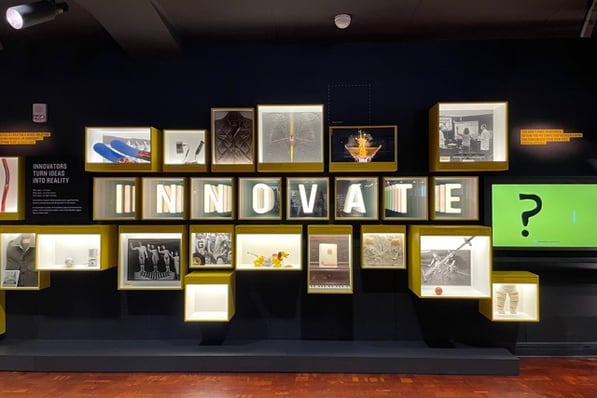

This museum is for you if:
You like local history
You like inventions
You like museums where you can touch and interact with some of the exhibits
You’re any age
You’re with your family
If you’re interested in the history of Seattle in an interactive, colorful, vibrant environment jam-packed with information, let me introduce you to the Museum of History and Industry (MOHAI), located in South Lake Union, right on the water.
This museum tells the story of the creation and evolution of Seattle, through the lens of industry and innovation.
When you first enter, you’ll be greeted by an assortment of neon signs, Seattle memorabilia, and grand things like cars, planes, and boats.
I suggest beginning by heading up the stairs on your left to the second floor and seeing what’s essentially a trailer for the museum in the Prologue Theater. Then work your way through the exhibits clockwise, which will take you through the building of Seattle chronologically.
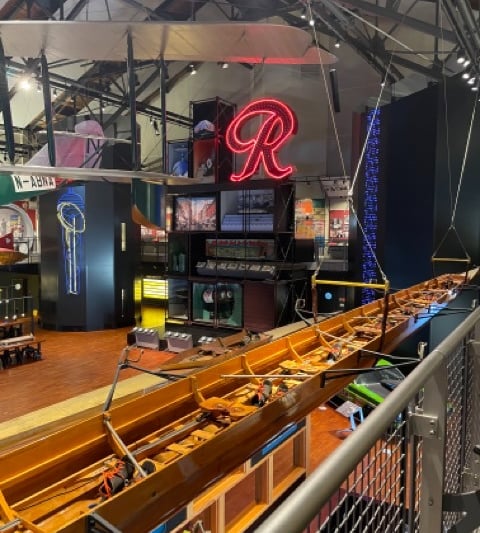

Starting in the Native Ground exhibit, you’ll learn about how Native people used natural resources like salmon, cedar, and the seasons. The exhibit follows the colonization of the area, what early settler life was like, and major families like the Dennys, who were helped by the local Duwamish when they first arrived. In fact, Seattle was named after the Duwamish Chief of the time, Chief Seattle.
Seattle in these early settler days was a mill town, becoming a logging and coal mining town when the railroad arrived (helping Washington achieve statehood) in 1889. A large section of Seattle burnt down in the summer of 1889 though, in what is called the Great Seattle Fire, started by a boiled over glue pot that you can learn all about in the Great Seattle Fire theater where the glue pot and other artifacts from the time sing you a musical about the fire—honestly this is my favorite part of the whole museum, do not skip it.
The exhibit continues by exploring the other industries that grew in an expanding Seattle, including automobile manufacturing and shipyards, beyond the already established logging and coal mining industries. The formation and evolution of Seattle had everything to do with the industries taking root there, and the MOHAI explores this thoroughly. Roads had to be designed and laid, ports and ferries had to be built. Denny Hill was regraded to be flatter (if you can believe it—if you’ve been to Seattle or are from here, you know how hilly downtown is!). They even built Harbor Island from scratch using the dirt that had previously been Denny Hill.
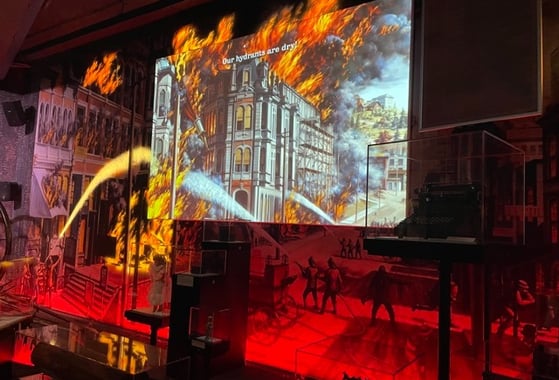

As you continue, the exhibits take you through Seattle and what it was like throughout time. From Prohibition, through the Depression and World Wars, the baby boom, the Cold War, the economic downturn in the city in the ’70s, and into the birth of the worldwide companies that currently are the leaders in their field, like Boeing, Microsoft, and Starbucks.
And you can’t talk about Seattle Industry without talking about the Tech Boom. What I didn’t know is how much medical technology was invented here! Like the ultrasound, the first kidney treatment centers, and prosthetics that allow the wearer to run.
Check out a submarine’s periscope’s view of the Space Needle from the Maritime Gallery on the top floor!
And if the kids get antsy and need a place to get creative, they have a kid-struction zone specially for them.
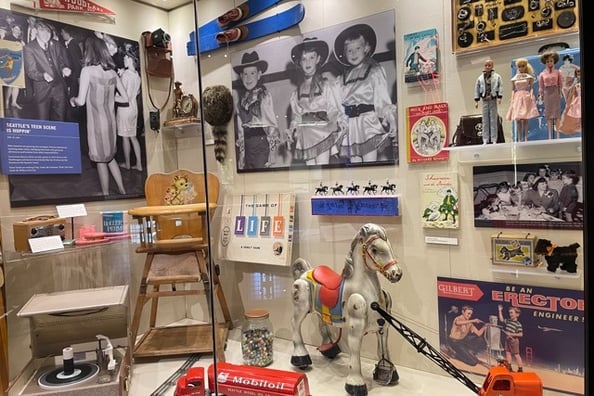

Back on the first floor, on the back wall and wrapping around to the front, is the Bezos Center for Innovation. There’s a wall of local innovations with space for more to come, an interactive wall explaining what makes a city a hub for innovation, and more hands-on learning opportunities about creating and growing a business.
Speaking of interactive, there are also tables in the back with touch activities, like a communal cross-stitch table, a place to doodle, and an activity where you get to be the fashion designer by holding up fabric pieces to cut-out images.
This is a great museum to come learn about the history of Seattle through the lens of industry and innovation for people of all ages. There really is something for everyone here.
Check out the video below for my walkthrough and some more commentary I didn’t include here.

A few practical things to note:
Address:
860 Terry Ave N, Seattle, WA 98109
Phone: 206-324-1126
There is no official museum parking. The small lot out front is for employees and ADA only. There is a small lot directly in front of the Center for Wooden boats that is paid city parking, but I wouldn’t exactly count on getting a spot there. There are some other private lots in the area, but if you can, I suggest taking public transportation. There’s a South Lake Union Streetcar stop right in front of the small parking lot.
It took me about 2 hours to go through the entire museum reading a lot of the information but not all. Plan for a 2-3 hour visit, depending on how much you like to stop and read and interact with the information.
Open daily 10am-5pm (most museums aren’t open seven days a week so this is cool!)
On the first Thursday of the month the museum is open until 8pm, and it’s free from 5-8pm (if you come earlier you do have to pay).
Admission prices:
-Adult: $25
-Senior (65+): $20
-Military: $20
-Student: $19
-Youth (14 and under): Free with chaperone
-MOHAI Member: Free
-Free for certain community members through the Open Doors program
(learn more here)
Learn about events and ongoing programs at the MOHAI here
